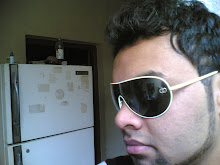Aspicore GSM Tracker 2.v2.20.573S60v2.SymbianOS7.Cracked-illusion
Aspicore.GSM.Tracker.2.v2.20.573.S60v2.SymbianOS7. Cracked-illusion
Real-Time GPS Location Tracking with Series 60 Smartphone and SQL database. Low data costs thanks to GPRS and compact messages. Uses Bluetooth GPS or cell tower ID.
Introduction
Tool to track locations of Series 60 phones in a remote SQL database. Low data costs thanks to GPRS and compact messages. Uses Bluetooth GPS or cell tower information.
Purpose
The product is intended for fleet tracking or personal location tracking.
Would you like to...
* View the whereabouts of your entire fleet from your desktop?
* Know the closest vehicle or technician to the next job site?
* Access yesterday's detailed route history for every vehicle in your fleet?
With a system based on Aspicore GSM Tracker, you can!
What does the application do?
Cost-effective and efficient tool to track several mobile phones in a remote SQL database.
Aspicore GSM Tracker is an S60 application, which makes the smartphone into a real-time AVL (Automatic Vehicle Location) tracking device.
The application determines the location with a Bluetooth GPS receiver and transmits the tracking data to a server in real-time through a cellular packet data connection. The data connection to the server is usually made via the Internet.
System description and purpose
Typically server stores the received tracking data into a SQL database. The data can be visualized with simple map software, (e.g. Google Maps, Google Earth) or it can be linked to a professional fleet management system or a mobile workforce management system.
Individual users can use Aspicore GSM Tracker for personal location tracking. They can e.g. automatically publish their current location and daily track on their web page.
Features
You don't even need necessarily to have as many GPS receivers as tracked mobile phones, if a lower accuracy suffices and there are only a few places or standard routes you want to have recognised. The location of the mobile phone can also be determined by the network cell id, which identifies the cell tower the phone is connected to.
You can configure the timers and events, which trigger the data send action. The data is sent in a compact UDP datagram, only a little over 100 packet data bytes per message. This means that the data transfer costs are minimal compared to e.g. SMS and the communication transactions are very fast.
Location tracking system
The central database can be a powerful SQL engine, which handles hundreds of mobile tracking targets. (Depending on the tracking frequency and resolution.) The database accumulates position data from the mobile phones being tracked. Each record in the database is identified by the IMEI code of the phone the data belongs to.
The location data is collected to an industry standard SQL database. This makes it straightforward to integrate with the rest of your company data systems.
If you are not using a GPS receiver, you must first create a mapping from the network cell ID to a geographical location. Unless you get the cell tower location lists from your mobile operator, you can collect the data yourself by driving around the places you want to have recognised by the system and have Aspicore GSM Tracker and a Bluetooth GPS to record the GPS coordinates of the network cells.
When the system is eventually being used, the mobile will report its network cell information to the system server by using Aspicore GSM Tracker. The server compares the network cell information to the accumulated data and converts it to an estimated geographical location. This way you can track your sales representatives, delivery men, children etc without them needing to carry a GPS receiver with them.
Version history
v2.20
-----
Release date 28 March 2007
When using HTTP protocol, the coordinates are now correctly signed
also in the range of from -0.99 degrees to 0 degrees. (In earlier
version, the program always used positive sign for the coordinate
values between -0.99 degrees and 0.99 degrees, when HTTP protocol was
used. This was a problem e.g. in London.)
The occassional slow application exit problem should be now solved.
The problem was correlated with an unexpected break in the packet
data connection.
Supported phones
S60 platform 2nd Edition (Symbian OS v7.0s/8.0)
Nokia 3230, 6260, 6600, 6620, 6630, 6670, 6680, 6681, 6682, 7610, N70, N72
Panasonic X700, X800
Samsung SGH-D720, SGH-D730
Supported GPS devices
Any NMEA-0183 compliant Bluetooth GPS. Tested with
Nokia Wireless GPS Module LD-1W or LD-3W
Socket Bluetooth GPS receiver (technically identical to Emtac)
Holux GR-230 Bluetooth GPS
Holux GPSlim236
Anycom GP-600 BC79 Bluetooth GPS
TomTom Wireless GPS
Belkin Bluetooth GPS Receiver (resembles Fortuna Clip-On)
Bluei Wireless GPS Receiver
FALCOM NAVI-1
FALCOM NAVI-XT
Pretec BluetoothGPS
Pretec BluetoothGPS Mini
Deluo / Polstar PBT-111
Deluo BlackBox Bluetooth Receiver
Rikaline GPS-6033 Bluetooth GPS
RoyalTek RBT-2001 Bluetooth GPS Receiver
Code:
http://rapidshare.com/files/23966065/Aspicore.GSM.Tracker.2.v2.20.573.S60v2.SymbianOS7.Cracked_illusion.rar

No comments:
Post a Comment